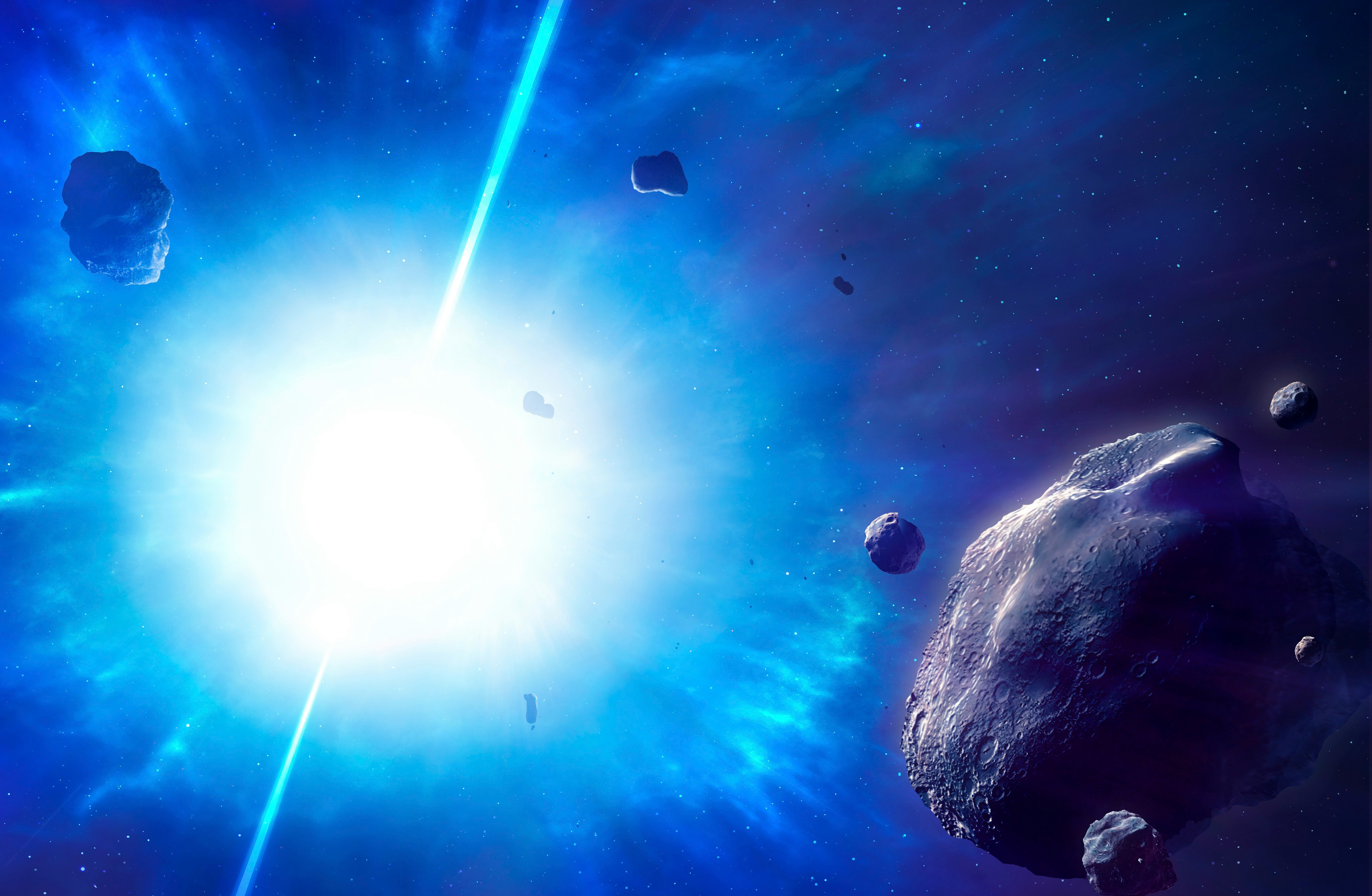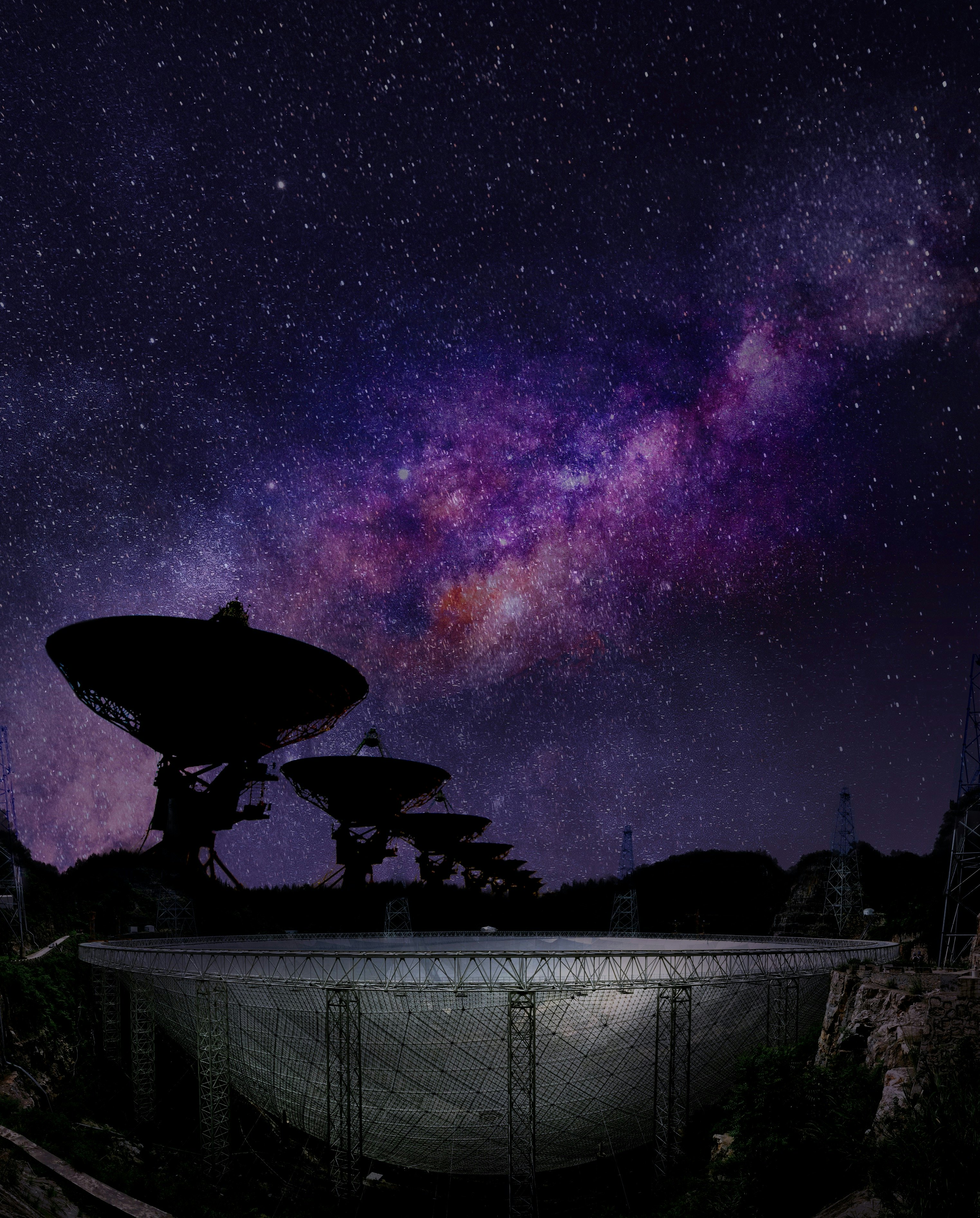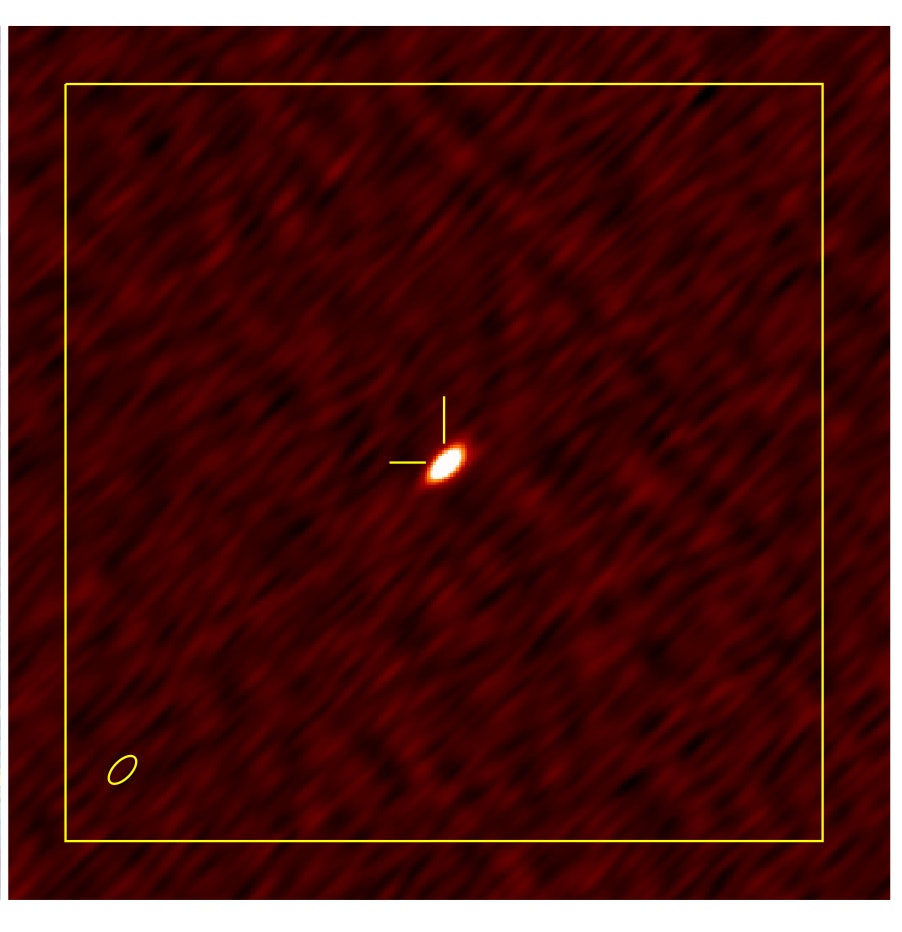
Astronomers recently announced the discovery of another repeating fast radio burst (FRB), powerful pulses of energy that come from far away in the universe and whose causes are still mysterious. Many FRBs are seen just once, but this one, named FRB 20190520B, flashes over and over again, in seemingly random bursts. Not only were the astronomers able to pin down an exact location for the FRB, but they say the signal contains exciting clues to its origin.
FRB 20190520B was first seen in 2019 by astronomers working with the Commensal Radio Astronomy FAST Survey (CRAFTS), which scans the sky for radio waves using a giant telescope called the Five-hundred-meter Aperture Spherical radio Telescope (FAST), which is 1,600 feet in diameter built into a natural bowl in southwestern China.
In one scan, they found four quick spikes of radio waves coming from the same place in the sky, spread out across just 24 seconds. Follow-up observations from the telescope found many more of these bursts in the same location. The astronomers were able to wrangle observations from other telescopes around the world to get a better look at where they were coming from. An international team of researchers reported the find in a paper published today in the journal Nature.
What they found — The source was located on the edge of a dwarf galaxy some 3 billion light-years away from Earth. The host galaxy is quite young, paper coauthor Di Li, the FAST chief scientist at the National Astronomical Observatories of China, tells Inverse. That means it’s probably an active, chaotic place where hundreds of thousands of stars are born from massive dust and gas clouds that swirl inwards as their own gravity pulls them together. The exact mechanism behind the FRB isn’t clear, but it’s a single, compact source, the astronomers say in the paper.
An FRB is a single, short pulse of radio waves that can contain as much energy in a millisecond as our Sun emits in three days. Because they’re so far away, we only see a small fraction of that energy on Earth. But it means that whatever’s causing FRBs must be incredibly powerful. There are probably hundreds of FRBs happening every day, including in our own Milky Way galaxy, though we only see a small fraction of them.

Scientists have proposed several different theories for what that might be, ranging from neutron stars to black holes, to more exotic things like the collapse of the magnetosphere around a black hole to the implosion of clusters of hypothetical particles known as axions. More recently, astronomers have found evidence that magnetars might cause some FRBs, neutron stars with magnetic fields trillions of times more powerful than Earth’s. Different FRBs might also be caused by different kinds of astrophysical phenomena, meaning there’s more than one explanation for the mysterious bursts.
Astronomers found the first FRB in 2007, and we’ve seen dozens since then. Most FRBs seem to flash just once and then go silent, though astronomers have also seen a rare few that repeat. FRB 20190520B is one of these repeaters, giving astronomers the chance to follow up on their initial observation to learn more about it. Curiously, FRB 20190520B doesn’t pulse at a predictable schedule but instead sends out seemingly random bursts — lots of them.
“Almost every time we looked at it, it produced detectable signals,” Li says. “So it is constantly bursting.”
Astronomers have seen a few other FRBs that repeat, including one that sends out predictable pulses, and others that pulse randomly, like FRB 20190520B. But this newest FRB is the first one we’ve seen that’s constantly active.
Additional weirdness — FRB 20190520B is unique in another way as well, Li says. Every FRB signal has something associated with it called a dispersion measure, which gives astronomers an idea of how much material it’s passed through on its way to Earth. That material could be random particles in the interstellar medium, or it could be clouds of gas and dust found closer to the source of the FRB itself. Either way, the dispersion measure is a crucial piece of information astronomers can use to learn more about what makes up the universe, as well as the place the FRB came from.

The dispersion measure associated with FRB 20190520B is the highest ever seen for an FRB, which means that it’s passed through a lot of stuff on its way here. Li says it’s a clue that the FRB is sitting in a hot, chaotic environment, exactly like what astronomers would expect from a young galaxy that’s forming lots of stars. As baby stars form, they create turbulent conditions with many energetic particles blowing around and powerful magnetic fields. FRB 20190520B seems to be sitting either in the middle of this chaos or at least very near to it.
“FRB 20190520B thus has the most complex local environment and is probably young,” Li says.
Exactly what’s causing this strange new FRB is very much a mystery, but Li says the new data gives scientists new perspectives on the high-energy signals.
“It helps paint an evolutionary picture of the FRBs, which still remain a mysterious and extremely explosive phenomenon in our universe,” he says.
Perhaps this latest, super-active FRB represents a previously unknown source mechanism for these powerful radio bursts in the sky. Even if it doesn’t, astronomers will be keeping an eye on FRB 20190520B in the coming months and years to see what else its signal can show us about the place it comes from.







